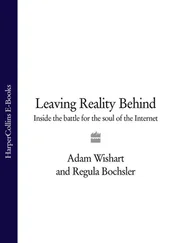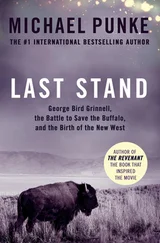Even as we worked on these regulatory matters, the heat was rising under Lehman Brothers. In April a New York hedge fund manager named David Einhorn had announced that he was shorting Lehman. Then, on May 21, at an investment conference in New York, he raised the ante, questioning Lehman’s accounting of its troubled assets, including mortgage securities. He insisted that the bank had vastly overvalued these assets and had underreported its problems in the first quarter. With his frequent television appearances and negative public comments, Einhorn seemed to be leading a crusade against Lehman.
Almost on cue, the firm’s health took a turn for the worse. On June 9, the bank released earnings for the second quarter a week early, reporting a preliminary loss of $2.8 billion, owing to write-downs in its mortgage portfolio. Lehman also said it had raised $6 billion in new capital—$4 billion in common stock and $2 billion in mandatory convertible preferred shares. But the damage was done. The shares had tumbled from $39.56 the day of Einhorn’s speech to $29.48.
I had been constantly in touch with Dick Fuld. (My call log would show nearly 50 discussions with him between Bear Stearns’s failure and Lehman’s collapse six months later, and my staff probably was on at least as many calls.) He asked me what I thought of his president and his chief financial officer. How would the market react if he replaced them? I said I didn’t know, but there was a chance the market would see that as a desperate act. On June 12, he fired longtime friend Joseph Gregory, who was president and chief operating officer, and demoted Erin Callan, his chief financial officer. Herbert (Bart) McDade, a senior member of Dick’s team and the company’s former global head of equities, replaced Gregory, while co–chief administrative officer Ian Lowitt succeeded Callan. Lehman shares touched a new year low of $22.70. They would end June at $19.81.
All year, Dick had been struggling to come to grips with the erosion of confidence in his firm. Yet even though he was on full alert, he remained overly optimistic. He would insist Lehman didn’t need capital and then reluctantly raise it, hoping to calm the market. Finally, after the second-quarter numbers went public, he admitted that he needed to find a buyer or a strategic investor by September, when new results would be released.
“What are your third-quarter earnings going to be like?” I asked.
“Not good.”
Yet even in their efforts to find that buyer or investor, Dick and his people found it hard, I think, to price the firm attractively enough. When I talked with him about possible buyers, I pointed out—and Dick agreed—that Bank of America was the most logical candidate. Not only did BofA lack a strong investment banking business, but CEO Ken Lewis had great confidence in his own ability to buy and assimilate things. He had bought Countrywide and Chicago’s LaSalle Bank in the last year. He was in a buying mood. Dick had his lawyer, Rodge Cohen, call Lewis, and Lewis had Gregory Curl, BofA’s head of global corporate development and planning, look at Lehman’s books. But after Curl and his team had done their work, BofA decided not to pursue a deal.
My conversations with Dick were becoming very frustrating. Although I pressed him to accept reality and to operate with a greater sense of urgency, I was beginning to suspect that despite my blunt style, I wasn’t getting through.
With Lehman looking shakier, I asked my senior adviser, Steve Shafran, to begin contingency planning with the Fed and SEC for a possible failure. Steve, a brilliant 48-year-old former Goldman Sachs banker who had retired from the firm in 2000, was an expert financial engineer. A widower who had moved to Washington to raise his four children, he had offered to help me on a part-time basis. As the crisis unfolded, Steve would work around the clock as a go-to problem solver.
While Bob Hoyt and his people combed through Treasury history to see what authorities we might use if Lehman failed, Treasury, the Fed, and the SEC worked to assess potential damages and devise ways to minimize these. They identified four areas of risk that had to be controlled in any collapse: Lehman’s securities portfolio, its unsecured creditors, its triparty repo book, and its derivatives positions. The team managed to hammer out some possible protocols over the course of three months.
The SEC would want to be sure it could ring-fence the broker-dealer and ensure that all customers got back their collateral; the Fed might be able to step in and take over the triparty repo obligations of Lehman, which were secured. But figuring out what to do with the derivatives book proved elusive. There were no silver bullets, and I worried that the team wasn’t doing enough. Wasn’t there something else we could try, I’d ask, some legal authority we could invoke?
But there was none. The financial world had changed—with investment banks and hedge funds playing increasingly critical roles—but our powers and authorities had not kept up. To avoid damaging the system, we needed the ability to wind down a failing nonbank outside of bankruptcy, a court process designed to resolve creditor claims equitably rather than to reduce systemic risks. I raised the issue publicly for the first time at a speech in Washington in June. And I followed that up with a July 2 speech in London.
Shafran’s team briefly worked on crafting legislation to give the secretary of the Treasury wind-down powers. Barney Frank was supportive but cautioned us against trying to push legislation that was so complex substantively and politically. We concluded there was no way we could get what we needed passed with the congressional summer recess on the way and presidential elections in November. We knew it wasn’t going to be easy to work with the inadequate authorities we had, but we also knew that aggressively making the case for new authorities might itself precipitate Lehman’s failure. Instead, Barney encouraged the Fed and Treasury to interpret our existing powers broadly to protect the system, saying: “If you do so, I’m not going to raise legal issues.”
Meantime, the housing and GSE reform legislation continued to move much slower than expected. Initially, we’d thought it would be done by the July 4 recess, but that deadline had slipped away as Republicans dug in against homeowner bailouts, placing much of the burden for passage on the Democrats.
While Congress dithered, the markets got jittery. I was at a meeting of finance ministers from the Americas and the Caribbean in Cancún, Mexico, on June 23, when I heard that Freddie Mac shares had dropped below $20. That was off more than $10 since they’d announced plans to raise capital in March. I’d been hoping all along that the GSEs would be able to raise capital. Fannie had done so in May and June, raising $7.4 billion in common and preferred stock. But Freddie had not done anything. Now they would not be able to access the market, and we did not have the legislation we needed to protect them or the taxpayers.
I put in a call to Barney Frank to find out the progress of the bill, but I couldn’t reach him. I had just gone into the lavatory in the hotel where the finance ministers were meeting, when Barney returned my call.
“Barney,” I said, “you’re getting me in a men’s room in Mexico!”
“Don’t drink the water,” he replied without losing a beat. Barney then told me he was committed to GSE reform and optimistic about getting our legislation.
On June 28 I went on a five-day trip to meet with political leaders, finance ministers, and central bankers in Russia, Germany, and the U.K. After seeing Russia’s finance minister, Alexei Kudrin, a voice of reason and a straight-shooting reformer, I had meetings scheduled with Prime Minister Vladimir Putin and President Dmitry Medvedev.
Читать дальше












